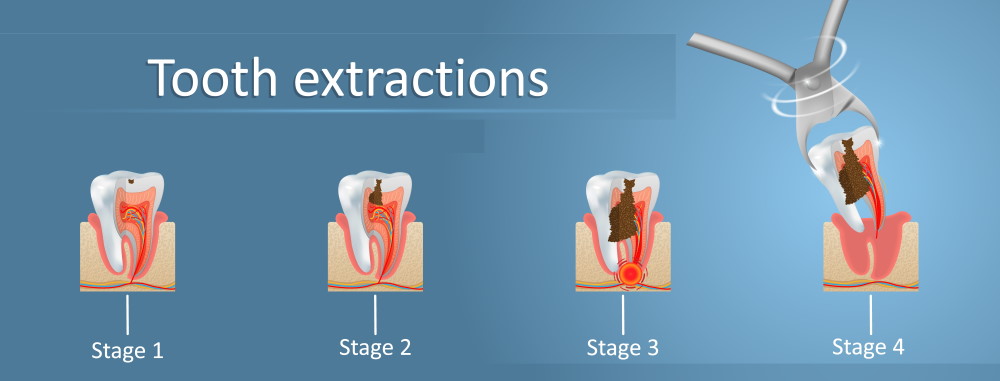Tooth Extraction
All Services
Contact Information
Email Us
Visit our Location
400/A/2L N.S.C. Bose Road, Naktala Kolkata 700047

Tooth Extraction
Tooth extraction is a common dental procedure performed to remove a tooth that is damaged, decayed, or poses a threat to overall oral health. This procedure may be necessary due to various reasons, including severe tooth decay, periodontal disease, overcrowding, or impacted teeth, which can cause pain or infection. Dr. Sambuddha Chakrabarty evaluates each patient’s condition to determine the need for extraction. The process begins with a comprehensive examination and X-rays to assess the tooth’s condition and root structure. Local anesthesia is administered to numb the area, and for more complicated cases, such as impacted teeth, sedation may be used to ensure patient comfort. After the extraction, proper care is crucial for promoting healing and reducing the risk of complications. Patients receive detailed post-extraction care instructions, which may include avoiding certain foods, taking prescribed medications for pain management, and maintaining good oral hygiene while gently cleaning the area around the extraction site. Although tooth extraction is generally safe, potential complications such as dry socket, infection, or delayed healing can occur. Dr. Chakrabarty emphasizes the importance of being aware of warning signs, like prolonged pain or swelling, and encourages patients to contact the clinic with any concerns. Overall, tooth extraction, when performed by a qualified dental professional, can significantly improve oral health, alleviate pain, and prepare patients for further dental treatments.
Importance of Tooth Extraction
Tooth extraction plays a vital role in maintaining oral health, as it addresses issues that could lead to more significant complications if left untreated. For instance, when a tooth is severely decayed or infected, it can lead to abscess formation, which poses risks to surrounding teeth and overall health. By removing the problematic tooth, patients can prevent the spread of infection and avoid the development of more severe dental issues.
Types of Tooth Extractions
There are two main types of tooth extractions: simple and surgical. A simple extraction is performed on teeth that are visible in the mouth and can be removed using forceps after numbing the area with local anesthesia. In contrast, surgical extractions are more complex and are typically required for teeth that are impacted or not fully erupted, such as wisdom teeth. This type of extraction involves making an incision in the gum tissue to access the tooth and may require sedation for patient comfort.
Recovery After Tooth Extraction
Post-extraction recovery is an essential aspect of the procedure, and patients should adhere to their dentist’s recommendations for optimal healing. Initial discomfort is common and can be managed with over-the-counter pain relievers or prescribed medication. Swelling may occur, and patients are advised to apply ice packs to the outside of their cheeks during the first 24 hours to reduce inflammation. It’s important to rest and avoid strenuous activities for a few days, allowing the body to heal effectively.
Signs of Complications
While tooth extractions are generally safe, being aware of potential complications is crucial. Patients should monitor the extraction site for signs of infection, such as increased pain, swelling, or discharge. A condition known as dry socket can occur when the blood clot at the extraction site becomes dislodged, leading to exposure of the bone and nerves underneath. Symptoms of dry socket include severe pain and an unpleasant taste in the mouth. Patients are encouraged to contact Dr. Sambuddha Chakrabarty if they experience any of these symptoms, ensuring prompt evaluation and management.
Long-Term Considerations
After a tooth extraction, long-term oral health considerations should be taken into account. Depending on the number of teeth removed and their location, patients may require restorative options such as dental implants, bridges, or dentures to maintain proper bite function and aesthetics. Dr. Chakrabarty will provide guidance on the best options for each patient, helping them restore their smile and confidence while ensuring overall oral health is maintained. Regular dental check-ups are essential to monitor healing and plan any necessary follow-up treatments.
